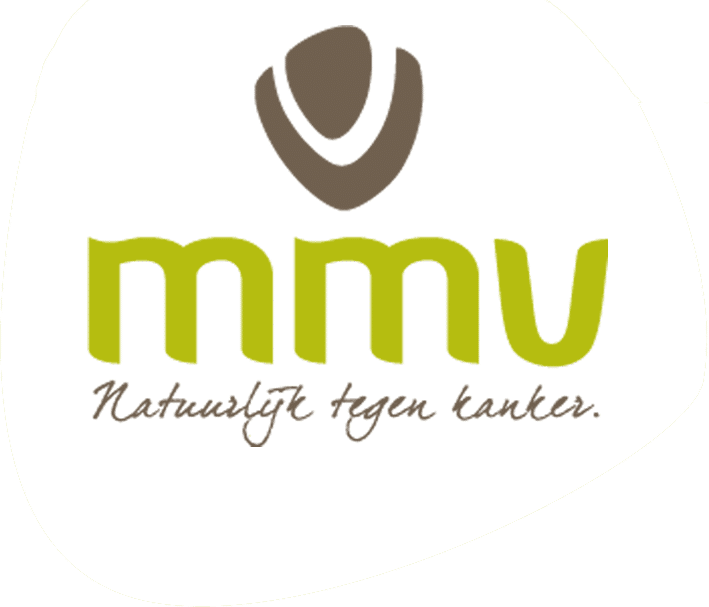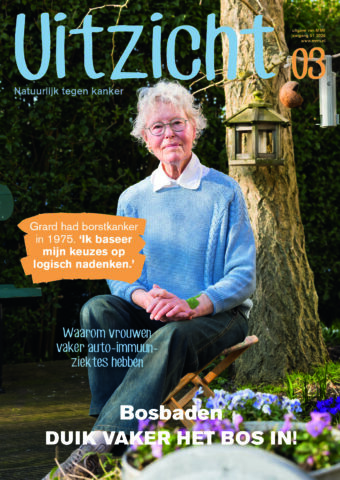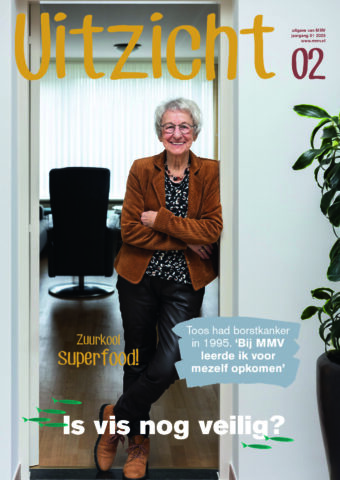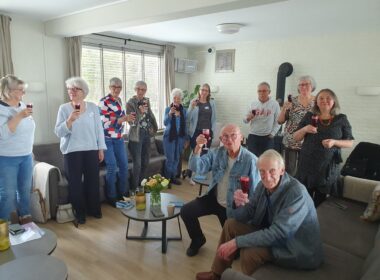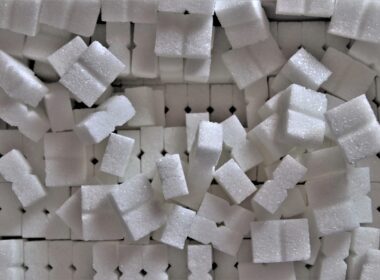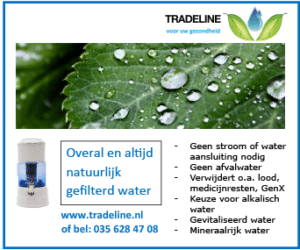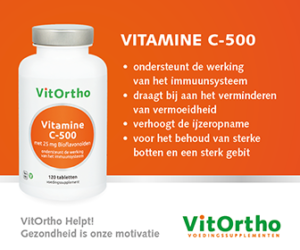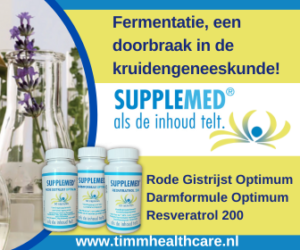Wat heeft kanker overeen met hart- en nierfalen, epilepsie, neurodegeneratieve ziekten en een virusinfectie? Antwoord: het Warburgeffect. Dit effect dat Otto Warburg (1-13) ontdekte bij kanker is een eigenschap van alle delende cellen (14,15) en blijkt de gemene deler van uiteenlopende ziekten.
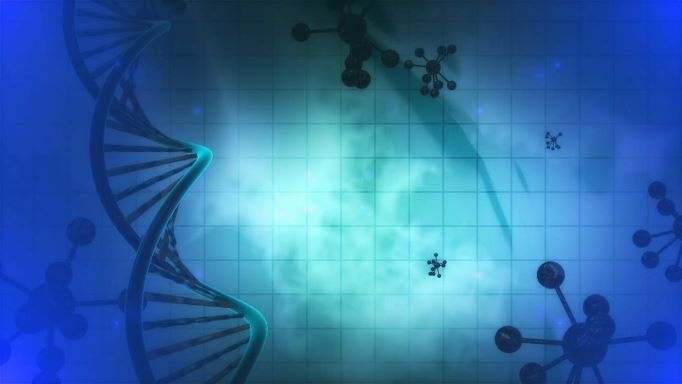
Delende cellen produceren onderdelen voor nieuwe cellen, zoals DNA, celmembranen en eiwitten. Glucose is hierbij het belangrijkste bouwmateriaal. De opgenomen glucose wordt slechts voor een klein deel gebruikt voor het maken van de energie die de cel nodig heeft om te functioneren. Het grootste deel wordt geïnvesteerd in de productie van nieuw materiaal. Ook de mitochondriën, normaal de energiecentrales van de cel, werken in delende cellen mee in het maken van cel-onderdelen. Dat doen ze door de opname van het aminozuur glutamine. De voorkeur van delende cellen voor glucose en glutamine is onderdeel van het zogenaamde ‘Warburgeffect’; dat is vooral bekend als de neiging van tumoren om glucose op te nemen (en dat om te zetten naar melkzuur, zelfs als er voldoende zuurstof beschikbaar is).
Als een orgaan extra hard moet werken gaat het meer cellen maken (‘hyperplasie’) of de cellen worden groter en gaan harder werken (‘hypertrofie’). Sommige cellen kunnen niet of nauwelijks delen en worden in plaats daarvan beter in hun taak. Het meest bekend zijn de spieren als je dagelijks in de sportschool traint. Je maakt niet meer cellen, maar de bestaande worden groter en sterker (30-32).
De nieren (33) en het hart (34,35) van mensen met diabetes staan sterk onder druk. Hartcellen kunnen niet delen (36) en niercellen (in diabetische dieren) kunnen dat alleen in het beginstadium van de diabetes (37-39). Door hun verhoogde blootstelling aan glucose en groeifactoren ontvangen de nier- en hartcellen van mensen met diabetes een abnormale groeiprikkel (104-110). In de poging die hierdoor ontstaat om te delen, wat ze dus niet kunnen, gaan ze harder werken en blijven ze in het Warburgeffect ‘hangen’ (37-44). Dat gaat ten koste van de energievoorziening uit glucose, er ontstaat een ‘glucose energie gat’, de cellen zwellen op (hypertrofie) en voeren hun werk niet goed meer uit.
Ketonen kunnen als alternatieve bron van energie de reddende engelen zijn. Ze komen de (schijnbaar niet werkende) mitochondriën rechtstreeks binnen (45) en kunnen daarmee het ‘glucose energie gat’ vullen.
Ketonen ontstaan bij langdurig vasten en een ketogeen dieet (54-58). Zonder dieet kan je ze binnen krijgen uit een supplement met ‘middenketen triglyceriden’ (MCT; 59,60), of door het drinken van een ketonendrank (61). Ketose wordt reeds lang ingezet bij onbehandelbare epilepsie (62-67). Vermoedelijk helpt ketose tegen het optreden van epileptische aanvallen, omdat de cellen die dit veroorzaken ook aan een energietekort lijden. Ook bij neurodegeneratieve ziekten (Alzheimer, Parkinson) worden ketonen ingezet. (68-77). Bij deze ziekten vertonen de aangedane cellen ook het glucose-energietekort van het ’bevroren’ Warburgeffect (78-81).
Ketonen zijn ook nuttig bij vele andere ziekten (7,16,17,58) waarbij cellen een tekort aan glucose-energie hebben vanwege het Warburgeffect. Zoals een onwillig immuunsysteem (82-86). Virussen en in cellen groeiende bacteriën parasiteren op de nutriënten van de gastheercel. Zij her-programmeren de gastheercel naar het Warburgeffect zodat deze onderdelen gaat maken voor hún nageslacht (87-88a) en dat ten koste van de geïnfecteerde cel. Het chronisch vermoeidheidssyndroom (89,90) en long-COVID (91) zijn verdacht voor een sluimerend (virus)infect en kunnen dus mogelijk ook van ketonen profiteren. Gunstige resultaten komen ook uit het gebruik van ketonen in de oncologie (92-104). In aanvulling op de gebruikelijke chemo- en radiotherapie worden calorierestrictie (104) en het ketogeen dieet (92,95,96,99,100,102,105) onderzocht. Het zijn boeiende tijden in de medische-voedingswetenschap. Nu nog zorgen dat de praktiserende dokter op school iets over voeding heeft geleerd!
Image by PublicDomainPictures from Pixabay
Warburg effect
1. López-Lázaro M. The warburg effect: why and how do cancer cells activate glycolysis in the presence of oxygen? Anticancer Agents Med Chem. 2008 Apr;8(3):305-12. doi: 10.2174/187152008783961932. PMID: 18393789.
https://pubmed.ncbi.nlm.nih.gov/18393789/
2. Vander Heiden MG, Cantley LC, Thompson CB. Understanding the Warburg effect: the metabolic requirements of cell proliferation. Science. 2009 May 22;324(5930):1029-33. doi: 10.1126/science.1160809. PMID: 19460998; PMCID: PMC2849637.
https://pubmed.ncbi.nlm.nih.gov/19460998/
3. Dang CV. Links between metabolism and cancer. Genes Dev. 2012 May 1;26(9):877-90. doi: 10.1101/gad.189365.112. PMID: 22549953; PMCID: PMC3347786.
https://pubmed.ncbi.nlm.nih.gov/22549953/
4. Ward PS, Thompson CB. Metabolic reprogramming: a cancer hallmark even warburg did not anticipate. Cancer Cell. 2012 Mar 20;21(3):297-308. doi: 10.1016/j.ccr.2012.02.014. PMID: 22439925; PMCID: PMC3311998.
https://pubmed.ncbi.nlm.nih.gov/22439925/
5. Jeoung NH. Pyruvate Dehydrogenase Kinases: Therapeutic Targets for Diabetes and Cancers. Diabetes Metab J. 2015 Jun;39(3):188-97. doi: 10.4093/dmj.2015.39.3.188. PMID: 26124988; PMCID: PMC4483603.
https://pubmed.ncbi.nlm.nih.gov/26124988/
6. Liberti MV, Locasale JW. The Warburg Effect: How Does it Benefit Cancer Cells? Trends Biochem Sci. 2016 Mar;41(3):211-218. doi: 10.1016/j.tibs.2015.12.001. Epub 2016 Jan 5. Erratum in: Trends Biochem Sci. 2016 Mar;41(3):287. Erratum in: Trends Biochem Sci. 2016 Mar;41(3):287. PMID: 26778478; PMCID: PMC4783224.
https://pubmed.ncbi.nlm.nih.gov/26778478/
7. Abdel-Haleem AM, Lewis NE, Jamshidi N, Mineta K, Gao X, Gojobori T. The Emerging Facets of Non-Cancerous Warburg Effect. Front Endocrinol (Lausanne). 2017 Oct 23;8:279. doi: 10.3389/fendo.2017.00279. PMID: 29109698; PMCID: PMC5660072.
https://pubmed.ncbi.nlm.nih.gov/29109698/
8. Burns JS, Manda G. Metabolic Pathways of the Warburg Effect in Health and Disease: Perspectives of Choice, Chain or Chance. Int J Mol Sci. 2017 Dec 19;18(12):2755. doi: 10.3390/ijms18122755. PMID: 29257069; PMCID: PMC5751354.
https://pubmed.ncbi.nlm.nih.gov/29257069/
9. Corbet C. Stem Cell Metabolism in Cancer and Healthy Tissues: Pyruvate in the Limelight. Front Pharmacol. 2018 Jan 4;8:958. doi: 10.3389/fphar.2017.00958. PMID: 29403375; PMCID: PMC5777397.
https://pubmed.ncbi.nlm.nih.gov/29403375/
10. Zangari J, Petrelli F, Maillot B, Martinou JC. The Multifaceted Pyruvate Metabolism: Role of the Mitochondrial Pyruvate Carrier. Biomolecules. 2020 Jul 17;10(7):1068. doi: 10.3390/biom10071068. PMID: 32708919; PMCID: PMC7407832.
https://pubmed.ncbi.nlm.nih.gov/32708919/
11. Samec M, Liskova A, Koklesova L, Samuel SM, Zhai K, Buhrmann C, Varghese E, Abotaleb M, Qaradakhi T, Zulli A, Kello M, Mojzis J, Zubor P, Kwon TK, Shakibaei M, Büsselberg D, Sarria GR, Golubnitschaja O, Kubatka P. Flavonoids against the Warburg phenotype-concepts of predictive, preventive and personalised medicine to cut the Gordian knot of cancer cell metabolism. EPMA J. 2020 Jul 30;11(3):377-398. doi: 10.1007/s13167-020-00217-y. PMID: 32843908; PMCID: PMC7429635.
https://pubmed.ncbi.nlm.nih.gov/32843908/
12. Bouillaud F, Hammad N, Schwartz L. Warburg Effect, Glutamine, Succinate, Alanine, When Oxygen Matters. Biology (Basel). 2021 Oct 4;10(10):1000. doi: 10.3390/biology10101000. PMID: 34681099; PMCID: PMC8533123.
https://pubmed.ncbi.nlm.nih.gov/34681099/
13. Vaupel P, Multhoff G. Revisiting the Warburg effect: historical dogma versus current understanding. J Physiol. 2021 Mar;599(6):1745-1757. doi: 10.1113/JP278810. Epub 2021 Jan 4. PMID: 33347611.
https://pubmed.ncbi.nlm.nih.gov/33347611/
14. Kornberg MD. The immunologic Warburg effect: Evidence and therapeutic opportunities in autoimmunity. Wiley Interdiscip Rev Syst Biol Med. 2020 Sep;12(5):e1486. doi: 10.1002/wsbm.1486. Epub 2020 Feb 27. PMID: 32105390; PMCID: PMC7507184.
https://pubmed.ncbi.nlm.nih.gov/32105390/
15. Palsson-McDermott EM, O’Neill LA. The Warburg effect then and now: from cancer to inflammatory diseases. Bioessays. 2013 Nov;35(11):965-73. doi: 10.1002/bies.201300084. Epub 2013 Sep 20. PMID: 24115022.
https://pubmed.ncbi.nlm.nih.gov/24115022/
Non-cancer Warburg
7. Abdel-Haleem AM, Lewis NE, Jamshidi N, Mineta K, Gao X, Gojobori T. The Emerging Facets of Non-Cancerous Warburg Effect. Front Endocrinol (Lausanne). 2017 Oct 23;8:279. doi: 10.3389/fendo.2017.00279. PMID: 29109698; PMCID: PMC5660072.
16. Chen Z, Liu M, Li L, Chen L. Involvement of the Warburg effect in non-tumor diseases processes. J Cell Physiol. 2018 Apr;233(4):2839-2849. doi: 10.1002/jcp.25998. Epub 2017 Jun 12. PMID: 28488732.
https://pubmed.ncbi.nlm.nih.gov/28488732/
17. Schwartz L, Henry M, Alfarouk KO, Reshkin SJ, Radman M. Metabolic Shifts as the Hallmark of Most Common Diseases: The Quest for the Underlying Unity. Int J Mol Sci. 2021 Apr 12;22(8):3972. doi: 10.3390/ijms22083972. PMID: 33921428; PMCID: PMC8068795.
https://pubmed.ncbi.nlm.nih.gov/33921428/
SGLT2 inhibition/kidney and heart failure
18. Paneni F, Costantino S, Hamdani N. Regression of left ventricular hypertrophy with SGLT2 inhibitors. Eur Heart J. 2020 Sep 21;41(36):3433-3436. doi: 10.1093/eurheartj/ehaa530. PMID: 32620974.
https://pubmed.ncbi.nlm.nih.gov/32620974/
18a. Zelniker TA, Wiviott SD, Raz I, Im K, Goodrich EL, Bonaca MP, Mosenzon O, Kato ET, Cahn A, Furtado RHM, Bhatt DL, Leiter LA, McGuire DK, Wilding JPH, Sabatine MS. SGLT2 inhibitors for primary and secondary prevention of cardiovascular and renal outcomes in type 2 diabetes: a systematic review and meta-analysis of cardiovascular outcome trials. Lancet. 2019 Jan 5;393(10166):31-39. doi: 10.1016/S0140-6736(18)32590-X. Epub 2018 Nov 10. Erratum in: Lancet. 2019 Jan 5;393(10166):30. PMID: 30424892.
https://pubmed.ncbi.nlm.nih.gov/30424892/
19. Kaneto H, Obata A, Kimura T, Shimoda M, Kinoshita T, Matsuoka TA, Kaku K. Unexpected Pleiotropic Effects of SGLT2 Inhibitors: Pearls and Pitfalls of This Novel Antidiabetic Class. Int J Mol Sci. 2021 Mar 17;22(6):3062. doi: 10.3390/ijms22063062. PMID: 33802741; PMCID: PMC8002535.
https://pubmed.ncbi.nlm.nih.gov/33802741/
20. Muskiet MHA, Heerspink HJL, van Raalte DH. SGLT2 inhibitors: expanding their Empire beyond diabetes. Lancet Diabetes Endocrinol. 2021 Feb;9(2):59-61. doi: 10.1016/S2213-8587(20)30428-9. Epub 2020 Dec 22. PMID: 33357504.
https://pubmed.ncbi.nlm.nih.gov/33357504/
21. Paneni F, Costantino S, Hamdani N. Regression of left ventricular hypertrophy with SGLT2 inhibitors. Eur Heart J. 2020 Sep 21;41(36):3433-3436. doi: 10.1093/eurheartj/ehaa530. PMID: 32620974.
https://pubmed.ncbi.nlm.nih.gov/32620974/
22. Salvatore T, Galiero R, Caturano A, Rinaldi L, Di Martino A, Albanese G, Di Salvo J, Epifani R, Marfella R, Docimo G, Lettieri M, Sardu C, Sasso FC. An Overview of the Cardiorenal Protective Mechanisms of SGLT2 Inhibitors. Int J Mol Sci. 2022 Mar 26;23(7):3651. doi: 10.3390/ijms23073651. PMID: 35409011; PMCID: PMC8998569.
https://pubmed.ncbi.nlm.nih.gov/35409011/
23. Uthman L, Baartscheer A, Schumacher CA, Fiolet JWT, Kuschma MC, Hollmann MW, Coronel R, Weber NC, Zuurbier CJ. Direct Cardiac Actions of Sodium Glucose Cotransporter 2 Inhibitors Target Pathogenic Mechanisms Underlying Heart Failure in Diabetic Patients. Front Physiol. 2018 Nov 21;9:1575. doi: 10.3389/fphys.2018.01575. PMID: 30519189; PMCID: PMC6259641.
https://pubmed.ncbi.nlm.nih.gov/30519189/
SGLT2 inhibition and glucose loss
24. Abdul-Ghani MA, Norton L, DeFronzo RA. Renal sodium-glucose cotransporter inhibition in the management of type 2 diabetes mellitus. Am J Physiol Renal Physiol. 2015 Dec 1;309(11):F889-900. doi: 10.1152/ajprenal.00267.2015. Epub 2015 Sep 9. PMID: 26354881; PMCID: PMC4669360.
https://pubmed.ncbi.nlm.nih.gov/26354881/
25. Vallon V, Thomson SC. The tubular hypothesis of nephron filtration and diabetic kidney disease. Nat Rev Nephrol. 2020 Jun;16(6):317-336. doi: 10.1038/s41581-020-0256-y. Epub 2020 Mar 9. PMID: 32152499; PMCID: PMC7242158.
https://pubmed.ncbi.nlm.nih.gov/32152499/
SGLT2 inhibition and ketone formation
26. Evans M, Cogan KE, Egan B. Metabolism of ketone bodies during exercise and training: physiological basis for exogenous supplementation. J Physiol. 2017 May 1;595(9):2857-2871. doi: 10.1113/JP273185. Epub 2016 Dec 7. PMID: 27861911; PMCID: PMC5407977.
https://pubmed.ncbi.nlm.nih.gov/27861911/
27. Polidori D, Iijima H, Goda M, Maruyama N, Inagaki N, Crawford PA. Intra- and inter-subject variability for increases in serum ketone bodies in patients with type 2 diabetes treated with the sodium glucose co-transporter 2 inhibitor canagliflozin. Diabetes Obes Metab. 2018 May;20(5):1321-1326. doi: 10.1111/dom.13224. Epub 2018 Feb 14. PMID: 29341404; PMCID: PMC5947648.
https://pubmed.ncbi.nlm.nih.gov/29341404/
28. Herring RA, Shojaee-Moradie F, Stevenage M, Parsons I, Jackson N, Mendis J, Middleton B, Umpleby AM, Fielding BA, Davies M, Russell-Jones DL. The SGLT2 Inhibitor Dapagliflozin Increases the Oxidation of Ingested Fatty Acids to Ketones in Type 2 Diabetes. Diabetes Care. 2022 Jun 2;45(6):1408-1415. doi: 10.2337/dc21-2043. PMID: 35312749.
https://pubmed.ncbi.nlm.nih.gov/35312749/
29. Musso G, Saba F, Cassader M, Gambino R. Diabetic ketoacidosis with SGLT2 inhibitors. BMJ. 2020 Nov 12;371:m4147. doi: 10.1136/bmj.m4147. PMID: 33184044.
https://pubmed.ncbi.nlm.nih.gov/33184044/
Hyperplasia vs. hypertrophy
30. Taylor NA, Wilkinson JG. Exercise-induced skeletal muscle growth. Hypertrophy or hyperplasia? Sports Med. 1986 May-Jun;3(3):190-200. doi: 10.2165/00007256-198603030-00003. PMID: 3520748.
https://pubmed.ncbi.nlm.nih.gov/3520748/
31. Goss RJ. Hypertrophy versus hyperplasia. Science. 1966 Sep 30;153(3744):1615-20. doi: 10.1126/science.153.3744.1615. PMID: 5917072.
https://pubmed.ncbi.nlm.nih.gov/5917072/
32. Pathology. Chapter 1. Cellular Pathology. Physiological and pathological hyperplasia and hypertrophy. Accessed 19 06 2022
https://accessmedicine.mhmedical.com/content.aspx?bookid=499§ionid=41568284
33. Alicic RZ, Rooney MT, Tuttle KR. Diabetic Kidney Disease: Challenges, Progress, and Possibilities. Clin J Am Soc Nephrol. 2017 Dec 7;12(12):2032-2045. doi: 10.2215/CJN.11491116. Epub 2017 May 18. PMID: 28522654; PMCID: PMC5718284.
https://pubmed.ncbi.nlm.nih.gov/28522654/
34. Evangelista I, Nuti R, Picchioni T, Dotta F, Palazzuoli A. Molecular Dysfunction and Phenotypic Derangement in Diabetic Cardiomyopathy. Int J Mol Sci. 2019 Jul 2;20(13):3264. doi: 10.3390/ijms20133264. PMID: 31269778; PMCID: PMC6651260.
https://pubmed.ncbi.nlm.nih.gov/31269778/
35. Tan Y, Zhang Z, Zheng C, Wintergerst KA, Keller BB, Cai L. Mechanisms of diabetic cardiomyopathy and potential therapeutic strategies: preclinical and clinical evidence. Nat Rev Cardiol. 2020 Sep;17(9):585-607. doi: 10.1038/s41569-020-0339-2. Epub 2020 Feb 20. PMID: 32080423; PMCID: PMC7849055.
https://pubmed.ncbi.nlm.nih.gov/32080423/
36. Nakamura M, Sadoshima J. Mechanisms of physiological and pathological cardiac hypertrophy. Nat Rev Cardiol. 2018 Jul;15(7):387-407. doi: 10.1038/s41569-018-0007-y. PMID: 29674714.
https://pubmed.ncbi.nlm.nih.gov/29674714/
Stuck in Warburg effect
37. Wolf G. Cell cycle regulation in diabetic nephropathy. Kidney Int Suppl. 2000 Sep;77:S59-66. doi: 10.1046/j.1523-1755.2000.07710.x. PMID: 10997692.
https://pubmed.ncbi.nlm.nih.gov/10997692/
38. Vallon V, Thomson SC. The tubular hypothesis of nephron filtration and diabetic kidney disease. Nat Rev Nephrol. 2020 Jun;16(6):317-336. doi: 10.1038/s41581-020-0256-y. Epub 2020 Mar 9. PMID: 32152499; PMCID: PMC7242158.
https://pubmed.ncbi.nlm.nih.gov/32152499/
39. Uehara-Watanabe N, Okuno-Ozeki N, Minamida A, Nakamura I, Nakata T, Nakai K, Yagi-Tomita A, Ida T, Ikeda K, Kitani T, Yamashita N, Kamezaki M, Kirita Y, Matoba S, Tamagaki K, Kusaba T. Direct evidence of proximal tubular proliferation in early diabetic nephropathy. Sci Rep. 2022 Jan 17;12(1):778. doi: 10.1038/s41598-022-04880-1. PMID: 35039597; PMCID: PMC8763925.
https://pubmed.ncbi.nlm.nih.gov/35039597/
40. Zhang G, Darshi M, Sharma K. The Warburg Effect in Diabetic Kidney Disease. Semin Nephrol. 2018 Mar;38(2):111-120. doi: 10.1016/j.semnephrol.2018.01.002. PMID: 29602394; PMCID: PMC5973839.
https://pubmed.ncbi.nlm.nih.gov/29602394/
41. Verbrugge SAJ, Gehlert S, Stadhouders LEM, Jacko D, Aussieker T, M J de Wit G, Vogel ISP, Offringa C, Schönfelder M, Jaspers RT, Wackerhage H. PKM2 Determines Myofiber Hypertrophy In Vitro and Increases in Response to Resistance Exercise in Human Skeletal Muscle. Int J Mol Sci. 2020 Sep 25;21(19):7062. doi: 10.3390/ijms21197062. PMID: 32992783; PMCID: PMC7583908.
https://pubmed.ncbi.nlm.nih.gov/32992783/
42. Fernandez-Caggiano M, Kamynina A, Francois AA, Prysyazhna O, Eykyn TR, Krasemann S, Crespo-Leiro MG, Vieites MG, Bianchi K, Morales V, Domenech N, Eaton P. Mitochondrial pyruvate carrier abundance mediates pathological cardiac hypertrophy. Nat Metab. 2020 Nov;2(11):1223-1231. doi: 10.1038/s42255-020-00276-5. Epub 2020 Oct 26. PMID: 33106688; PMCID: PMC7610404.
https://pubmed.ncbi.nlm.nih.gov/33106688/
43. Cluntun AA, Badolia R, Lettlova S, Parnell KM, Shankar TS, Diakos NA, Olson KA, Taleb I, Tatum SM, Berg JA, Cunningham CN, Van Ry T, Bott AJ, Krokidi AT, Fogarty S, Skedros S, Swiatek WI, Yu X, Luo B, Merx S, Navankasattusas S, Cox JE, Ducker GS, Holland WL, McKellar SH, Rutter J, Drakos SG. The pyruvate-lactate axis modulates cardiac hypertrophy and heart failure. Cell Metab. 2021 Mar 2;33(3):629-648.e10. doi: 10.1016/j.cmet.2020.12.003. Epub 2020 Dec 16. PMID: 33333007; PMCID: PMC7933116.
https://pubmed.ncbi.nlm.nih.gov/33333007/
44. Kuspriyanti NP, Ariyanto EF, Syamsunarno MRRA. Role of Warburg Effect in Cardiovascular Diseases: A Potential Treatment Option. March 2021, The Open Cardiovascular Medicine Journal 15(1):6-17
https://opencardiovascularmedicinejournal.com/VOLUME/15/PAGE/6/ABSTRACT/
Ketones fill the glucose-energy gap, reducing risk of kidney and heart failure
45. Grabacka M, Pierzchalska M, Dean M, Reiss K. Regulation of Ketone Body Metabolism and the Role of PPARα. Int J Mol Sci. 2016 Dec 13;17(12):2093. doi: 10.3390/ijms17122093. PMID: 27983603; PMCID: PMC5187893.
https://pubmed.ncbi.nlm.nih.gov/27983603/
46. Mudaliar S, Alloju S, Henry RR. Can a Shift in Fuel Energetics Explain the Beneficial Cardiorenal Outcomes in the EMPA-REG OUTCOME Study? A Unifying Hypothesis. Diabetes Care. 2016 Jul;39(7):1115-22. doi: 10.2337/dc16-0542. PMID: 27289124.
https://pubmed.ncbi.nlm.nih.gov/27289124/
47. Santos-Gallego, C.G.; Ibanez, J.A.R.; San Antonio, R.; Ishikawa, K.; Watanabe, S.; Botija, M.B.P.; Sanz Salvo, A.J.; Hajjar, R.; Fuster, V.; Badimon, J. Empagliflozin induces a myocardial metabolic shift from glucose consumption to ketone metabolism that mitigates adverse cardiac remodeling and improves myocardial contractility. J. Am. Coll. Cardiol. 2018, 71, A674
48. McCommis KS, Kovacs A, Weinheimer CJ, Shew TM, Koves TR, Ilkayeva OR, Kamm DR, Pyles KD, King MT, Veech RL, DeBosch BJ, Muoio DM, Gross RW, Finck BN. Nutritional modulation of heart failure in mitochondrial pyruvate carrier-deficient mice. Nat Metab. 2020 Nov;2(11):1232-1247. doi: 10.1038/s42255-020-00296-1. Epub 2020 Oct 26. PMID: 33106690; PMCID: PMC7957960.
https://pubmed.ncbi.nlm.nih.gov/33106690/
49. Ekanayake P, Hupfeld C, Mudaliar S. Sodium-Glucose Cotransporter Type 2 (SGLT-2) Inhibitors and Ketogenesis: the Good and the Bad. Curr Diab Rep. 2020 Nov 23;20(12):74. doi: 10.1007/s11892-020-01359-z. PMID: 33230620.
https://pubmed.ncbi.nlm.nih.gov/33230620/
50. Yurista SR, Chong CR, Badimon JJ, Kelly DP, de Boer RA, Westenbrink BD. Therapeutic Potential of Ketone Bodies for Patients With Cardiovascular Disease: JACC State-of-the-Art Review. J Am Coll Cardiol. 2021 Apr 6;77(13):1660-1669. doi: 10.1016/j.jacc.2020.12.065. Epub 2021 Feb 23. PMID: 33637354.
https://pubmed.ncbi.nlm.nih.gov/33637354/
51. Mollace V, Rosano GMC, Anker SD, Coats AJS, Seferovic P, Mollace R, Tavernese A, Gliozzi M, Musolino V, Carresi C, Maiuolo J, Macrì R, Bosco F, Chiocchi M, Romeo F, Metra M, Volterrani M. Pathophysiological Basis for Nutraceutical Supplementation in Heart Failure: A Comprehensive Review. Nutrients. 2021 Jan 17;13(1):257. doi: 10.3390/nu13010257. PMID: 33477388; PMCID: PMC7829856.
https://pubmed.ncbi.nlm.nih.gov/33477388/
52. Saucedo-Orozco H, Voorrips SN, Yurista SR, de Boer RA, Westenbrink BD. SGLT2 Inhibitors and Ketone Metabolism in Heart Failure. J Lipid Atheroscler. 2022 Jan;11(1):1-19. doi: 10.12997/jla.2022.11.1.1. Epub 2022 Jan 13. PMID: 35118019; PMCID: PMC8792821.
https://pubmed.ncbi.nlm.nih.gov/35118019/
53. Ekanayake P, Mudaliar S. A novel hypothesis linking low-grade ketonaemia to cardio-renal benefits with sodium-glucose cotransporter-2 inhibitors. Diabetes Obes Metab. 2022 Jan;24(1):3-11. doi: 10.1111/dom.14562. Epub 2021 Oct 21. PMID: 34605129.
https://pubmed.ncbi.nlm.nih.gov/34605129/
Ketogenic diet
54. Kolb H, Kempf K, Röhling M, Lenzen-Schulte M, Schloot NC, Martin S. Ketone bodies: from enemy to friend and guardian angel. BMC Med. 2021 Dec 9;19(1):313. doi: 10.1186/s12916-021-02185-0. PMID: 34879839; PMCID: PMC8656040.
https://pubmed.ncbi.nlm.nih.gov/34879839/
55. Zhang W, Guo X, Chen L, Chen T, Yu J, Wu C, Zheng J. Ketogenic Diets and Cardio-Metabolic Diseases. Front Endocrinol (Lausanne). 2021 Nov 2;12:753039. doi: 10.3389/fendo.2021.753039. PMID: 34795641; PMCID: PMC8594484.
https://pubmed.ncbi.nlm.nih.gov/34795641/
56. Ströhle A, Hahn A. Diets of modern hunter-gatherers vary substantially in their carbohydrate content depending on ecoenvironments: results from an ethnographic analysis. Nutr Res. 2011 Jun;31(6):429-35. doi: 10.1016/j.nutres.2011.05.003. Epub 2011 Jun 12. PMID: 21745624.
https://pubmed.ncbi.nlm.nih.gov/21745624/
57. Crosby L, Davis B, Joshi S, Jardine M, Paul J, Neola M, Barnard ND. Ketogenic Diets and Chronic Disease: Weighing the Benefits Against the Risks. Front Nutr. 2021 Jul 16;8:702802. doi: 10.3389/fnut.2021.702802. PMID: 34336911; PMCID: PMC8322232.
https://pubmed.ncbi.nlm.nih.gov/34336911/
58. Zhu H, Bi D, Zhang Y, Kong C, Du J, Wu X, Wei Q, Qin H. Ketogenic diet for human diseases: the underlying mechanisms and potential for clinical implementations. Signal Transduct Target Ther. 2022 Jan 17;7(1):11. doi: 10.1038/s41392-021-00831-w. PMID: 35034957; PMCID: PMC8761750.
https://pubmed.ncbi.nlm.nih.gov/35034957/
Medium chain triglycerides (MCT)
59. Lin TY, Liu HW, Hung TM. The Ketogenic Effect of Medium-Chain Triacylglycerides. Front Nutr. 2021 Nov 18;8:747284. doi: 10.3389/fnut.2021.747284. PMID: 34888335; PMCID: PMC8650700.
https://pubmed.ncbi.nlm.nih.gov/34888335/
60. Vandenberghe C, St-Pierre V, Pierotti T, Fortier M, Castellano CA, Cunnane SC. Tricaprylin Alone Increases Plasma Ketone Response More Than Coconut Oil or Other Medium-Chain Triglycerides: An Acute Crossover Study in Healthy Adults. Curr Dev Nutr. 2017 Mar 22;1(4):e000257. doi: 10.3945/cdn.116.000257. PMID: 29955698; PMCID: PMC5998344.
https://pubmed.ncbi.nlm.nih.gov/29955698/
Ketone drink
61. Stubbs BJ, Cox PJ, Evans RD, Santer P, Miller JJ, Faull OK, Magor-Elliott S, Hiyama S, Stirling M, Clarke K. On the Metabolism of Exogenous Ketones in Humans. Front Physiol. 2017 Oct 30;8:848. doi: 10.3389/fphys.2017.00848. PMID: 29163194; PMCID: PMC5670148.
https://pubmed.ncbi.nlm.nih.gov/29163194/
Epilepsy
62. Kim DY, Rho JM. The ketogenic diet and epilepsy. Curr Opin Clin Nutr Metab Care. 2008 Mar;11(2):113-20. doi: 10.1097/MCO.0b013e3282f44c06. PMID: 18301085.
https://pubmed.ncbi.nlm.nih.gov/18301085/
63. Liu YM, Wang HS. Medium-chain triglyceride ketogenic diet, an effective treatment for drug-resistant epilepsy and a comparison with other ketogenic diets. Biomed J. 2013 Jan-Feb;36(1):9-15. doi: 10.4103/2319-4170.107154. PMID: 23515148.
https://pubmed.ncbi.nlm.nih.gov/23515148/
64. Nei M, Ngo L, Sirven JI, Sperling MR. Ketogenic diet in adolescents and adults with epilepsy. Seizure. 2014 Jun;23(6):439-42. doi: 10.1016/j.seizure.2014.02.015. Epub 2014 Mar 12. PMID: 24675110.
https://pubmed.ncbi.nlm.nih.gov/24675110/
65. Kossoff EH, Zupec-Kania BA, Auvin S, Ballaban-Gil KR, Christina Bergqvist AG, Blackford R, Buchhalter JR, Caraballo RH, Cross JH, Dahlin MG, Donner EJ, Guzel O, Jehle RS, Klepper J, Kang HC, Lambrechts DA, Liu YMC, Nathan JK, Nordli DR Jr, Pfeifer HH, Rho JM, Scheffer IE, Sharma S, Stafstrom CE, Thiele EA, Turner Z, Vaccarezza MM, van der Louw EJTM, Veggiotti P, Wheless JW, Wirrell EC; Charlie Foundation; Matthew’s Friends; Practice Committee of the Child Neurology Society. Optimal clinical management of children receiving dietary therapies for epilepsy: Updated recommendations of the International Ketogenic Diet Study Group. Epilepsia Open. 2018 May 21;3(2):175-192. doi: 10.1002/epi4.12225. PMID: 29881797; PMCID: PMC5983110.
https://pubmed.ncbi.nlm.nih.gov/29881797/
66. D’Andrea Meira I, Romão TT, Pires do Prado HJ, Krüger LT, Pires MEP, da Conceição PO. Ketogenic Diet and Epilepsy: What We Know So Far. Front Neurosci. 2019 Jan 29;13:5. doi: 10.3389/fnins.2019.00005. PMID: 30760973; PMCID: PMC6361831.
https://pubmed.ncbi.nlm.nih.gov/30760973/
67. Martin-McGill KJ, Bresnahan R, Levy RG, Cooper PN. Ketogenic diets for drug-resistant epilepsy. Cochrane Database Syst Rev. 2020 Jun 24;6(6):CD001903. doi: 10.1002/14651858.CD001903.pub5. PMID: 32588435; PMCID: PMC7387249.
https://pubmed.ncbi.nlm.nih.gov/32588435/
Parkinson, Alzheimer/ketones
68. Croteau E, Castellano CA, Richard MA, Fortier M, Nugent S, Lepage M, Duchesne S, Whittingstall K, Turcotte ÉE, Bocti C, Fülöp T, Cunnane SC. Ketogenic Medium Chain Triglycerides Increase Brain Energy Metabolism in Alzheimer’s Disease. J Alzheimers Dis. 2018;64(2):551-561. doi: 10.3233/JAD-180202. PMID: 29914035.
https://pubmed.ncbi.nlm.nih.gov/29914035/
69. Torosyan N, Sethanandha C, Grill JD, Dilley ML, Lee J, Cummings JL, Ossinalde C, Silverman DH. Changes in regional cerebral blood flow associated with a 45 day course of the ketogenic agent, caprylidene, in patients with mild to moderate Alzheimer’s disease: Results of a randomized, double-blinded, pilot study. Exp Gerontol. 2018 Oct 1;111:118-121. doi: 10.1016/j.exger.2018.07.009. Epub 2018 Jul 10. PMID: 30006299.
https://pubmed.ncbi.nlm.nih.gov/30006299/
70. Phillips MCL, Murtagh DKJ, Gilbertson LJ, Asztely FJS, Lynch CDP. Low-fat versus ketogenic diet in Parkinson’s disease: A pilot randomized controlled trial. Mov Disord. 2018 Aug;33(8):1306-1314. doi: 10.1002/mds.27390. Epub 2018 Aug 11. Erratum in: Mov Disord. 2019 Jan;34(1):157. PMID: 30098269; PMCID: PMC6175383.
https://pubmed.ncbi.nlm.nih.gov/30098269/
71. Fortier M, Castellano CA, Croteau E, Langlois F, Bocti C, St-Pierre V, Vandenberghe C, Bernier M, Roy M, Descoteaux M, Whittingstall K, Lepage M, Turcotte ÉE, Fulop T, Cunnane SC. A ketogenic drink improves brain energy and some measures of cognition in mild cognitive impairment. Alzheimers Dement. 2019 May;15(5):625-634. doi: 10.1016/j.jalz.2018.12.017. Epub 2019 Apr 23. PMID: 31027873.
https://pubmed.ncbi.nlm.nih.gov/31027873/
72. Jensen NJ, Wodschow HZ, Nilsson M, Rungby J. Effects of Ketone Bodies on Brain Metabolism and Function in Neurodegenerative Diseases. Int J Mol Sci. 2020 Nov 20;21(22):8767. doi: 10.3390/ijms21228767. PMID: 33233502; PMCID: PMC7699472.
https://pubmed.ncbi.nlm.nih.gov/33233502/
73. Phillips MCL, Deprez LM, Mortimer GMN, Murtagh DKJ, McCoy S, Mylchreest R, Gilbertson LJ, Clark KM, Simpson PV, McManus EJ, Oh JE, Yadavaraj S, King VM, Pillai A, Romero-Ferrando B, Brinkhuis M, Copeland BM, Samad S, Liao S, Schepel JAC. Randomized crossover trial of a modified ketogenic diet in Alzheimer’s disease. Alzheimers Res Ther. 2021 Feb 23;13(1):51. doi: 10.1186/s13195-021-00783-x. PMID: 33622392; PMCID: PMC7901512.
https://pubmed.ncbi.nlm.nih.gov/33622392/
74. Kovács Z, Brunner B, Ari C. Beneficial Effects of Exogenous Ketogenic Supplements on Aging Processes and Age-Related Neurodegenerative Diseases. Nutrients. 2021 Jun 26;13(7):2197. doi: 10.3390/nu13072197. PMID: 34206738; PMCID: PMC8308443.
https://pubmed.ncbi.nlm.nih.gov/34206738/
75. Pietrzak D, Kasperek K, Rękawek P, Piątkowska-Chmiel I. The Therapeutic Role of Ketogenic Diet in Neurological Disorders. Nutrients. 2022 May 6;14(9):1952. doi: 10.3390/nu14091952. PMID: 35565918; PMCID: PMC9102882.
https://pubmed.ncbi.nlm.nih.gov/35565918/
76. Butterfield DA, Favia M, Spera I, Campanella A, Lanza M, Castegna A. Metabolic Features of Brain Function with Relevance to Clinical Features of Alzheimer and Parkinson Diseases. Molecules. 2022 Jan 30;27(3):951. doi: 10.3390/molecules27030951. PMID: 35164216; PMCID: PMC8839962.
https://pubmed.ncbi.nlm.nih.gov/35164216/
77. Lilamand M, Mouton-Liger F, Di Valentin E, Sànchez Ortiz M, Paquet C. Efficacy and Safety of Ketone Supplementation or Ketogenic Diets for Alzheimer’s Disease: A Mini Review. Front Nutr. 2022 Jan 17;8:807970. doi: 10.3389/fnut.2021.807970. PMID: 35111799; PMCID: PMC8803132.
https://pubmed.ncbi.nlm.nih.gov/35111799/
77a. Hersant H, Grossberg G. The Ketogenic Diet and Alzheimer’s Disease. J Nutr Health Aging. 2022;26(6):606-614. doi: 10.1007/s12603-022-1807-7. PMID: 35718870.
https://pubmed.ncbi.nlm.nih.gov/35718870/
77b. Grammatikopoulou MG, Tousinas G, Balodimou C, Anastasilakis DA, Gkiouras K, Dardiotis E, Evangeliou AE, Bogdanos DP, Goulis DG. Ketogenic therapy for Parkinson’s disease: A systematic review and synthesis without meta-analysis of animal and human trials. Maturitas. 2022 Jun 9;163:46-61. doi: 10.1016/j.maturitas.2022.06.001. Epub ahead of print. PMID: 35714419.
https://pubmed.ncbi.nlm.nih.gov/35714419/
Parkinson/Alzheimer, Warburg effect
78. Atlante A, de Bari L, Bobba A, Amadoro G. A disease with a sweet tooth: exploring the Warburg effect in Alzheimer’s disease. Biogerontology. 2017 Jun;18(3):301-319. doi: 10.1007/s10522-017-9692-x. Epub 2017 Mar 17. PMID: 28314935.
https://pubmed.ncbi.nlm.nih.gov/28314935/
79. Newington JT, Pitts A, Chien A, Arseneault R, Schubert D, Cumming RC. Amyloid beta resistance in nerve cell lines is mediated by the Warburg effect. PLoS One. 2011 Apr 26;6(4):e19191. doi: 10.1371/journal.pone.0019191. PMID: 21541279; PMCID: PMC3082554.
https://pubmed.ncbi.nlm.nih.gov/21541279/
80. Sonntag KC, Ryu WI, Amirault KM, Healy RA, Siegel AJ, McPhie DL, Forester B, Cohen BM. Late-onset Alzheimer’s disease is associated with inherent changes in bioenergetics profiles. Sci Rep. 2017 Oct 25;7(1):14038. doi: 10.1038/s41598-017-14420-x. PMID: 29070876; PMCID: PMC5656579.
https://pubmed.ncbi.nlm.nih.gov/29070876/
81. Yang SQ, Tian Q, Li D, He SQ, Hu M, Liu SY, Zou W, Chen YJ, Zhang P, Tang XQ. Leptin mediates protection of hydrogen sulfide against 6-hydroxydopamine-induced Parkinson’s disease: Involving enhancement in Warburg effect. Neurochem Int. 2020 May;135:104692. doi: 10.1016/j.neuint.2020.104692. Epub 2020 Feb 4. PMID: 32032636.
https://pubmed.ncbi.nlm.nih.gov/32032636/
Non-cancer diseases related to Warburg effect
7. Abdel-Haleem AM, Lewis NE, Jamshidi N, Mineta K, Gao X, Gojobori T. The Emerging Facets of Non-Cancerous Warburg Effect. Front Endocrinol (Lausanne). 2017 Oct 23;8:279. doi: 10.3389/fendo.2017.00279. PMID: 29109698; PMCID: PMC5660072.
https://pubmed.ncbi.nlm.nih.gov/29109698/
16. Chen Z, Liu M, Li L, Chen L. Involvement of the Warburg effect in non-tumor diseases processes. J Cell Physiol. 2018 Apr;233(4):2839-2849. doi: 10.1002/jcp.25998. Epub 2017 Jun 12. PMID: 28488732.
https://pubmed.ncbi.nlm.nih.gov/28488732/
17. Schwartz L, Henry M, Alfarouk KO, Reshkin SJ, Radman M. Metabolic Shifts as the Hallmark of Most Common Diseases: The Quest for the Underlying Unity. Int J Mol Sci. 2021 Apr 12;22(8):3972. doi: 10.3390/ijms22083972. PMID: 33921428; PMCID: PMC8068795.
https://pubmed.ncbi.nlm.nih.gov/33921428/
58. Zhu H, Bi D, Zhang Y, Kong C, Du J, Wu X, Wei Q, Qin H. Ketogenic diet for human diseases: the underlying mechanisms and potential for clinical implementations. Signal Transduct Target Ther. 2022 Jan 17;7(1):11. doi: 10.1038/s41392-021-00831-
Immune system
82. Hirschberger S et al. Ketone Bodies Improve Human CD8+ Cytotoxic T-Cell Immune Response During COVID-19 Infection. Front. Med., 16 June 2022
https://doi.org/10.3389/fmed.2022.923502
83. Hirschberger S, Strauß G, Effinger D, Marstaller X, Ferstl A, Müller MB, Wu T, Hübner M, Rahmel T, Mascolo H, Exner N, Heß J, Kreth FW, Unger K, Kreth S. Very-low-carbohydrate diet enhances human T-cell immunity through immunometabolic reprogramming. EMBO Mol Med. 2021 Aug 9;13(8):e14323. doi: 10.15252/emmm.202114323. Epub 2021 Jun 21. PMID: 34151532; PMCID: PMC8350890.
https://pubmed.ncbi.nlm.nih.gov/34151532/
84. Guo Y, Xie YQ, Gao M, Zhao Y, Franco F, Wenes M, Siddiqui I, Bevilacqua A, Wang H, Yang H, Feng B, Xie X, Sabatel CM, Tschumi B, Chaiboonchoe A, Wang Y, Li W, Xiao W, Held W, Romero P, Ho PC, Tang L. Metabolic reprogramming of terminally exhausted CD8+ T cells by IL-10 enhances anti-tumor immunity. Nat Immunol. 2021 Jun;22(6):746-756. doi: 10.1038/s41590-021-00940-2. Epub 2021 May 24. PMID: 34031618; PMCID: PMC7610876.
https://pubmed.ncbi.nlm.nih.gov/34031618/
85. Leone RD, Powell JD. Fueling the Revolution: Targeting Metabolism to Enhance Immunotherapy. Cancer Immunol Res. 2021 Mar;9(3):255-260. doi: 10.1158/2326-6066.CIR-20-0791. PMID: 33648947; PMCID: PMC8240594.
https://pubmed.ncbi.nlm.nih.gov/33648947/
86. Collins N, Belkaid Y. Control of immunity via nutritional interventions. Immunity. 2022 Feb 8;55(2):210-223. doi: 10.1016/j.immuni.2022.01.004. PMID: 35139351.
https://pubmed.ncbi.nlm.nih.gov/35139351/
Viruses, reprogram to Warburg effect
87. Darekar S, Georgiou K, Yurchenko M, Yenamandra SP, Chachami G, Simos G, Klein G, Kashuba E. Epstein-Barr virus immortalization of human B-cells leads to stabilization of hypoxia-induced factor 1 alpha, congruent with the Warburg effect. PLoS One. 2012;7(7):e42072. doi: 10.1371/journal.pone.0042072. Epub 2012 Jul 27. PMID: 22848707; PMCID: PMC3407085.
https://pubmed.ncbi.nlm.nih.gov/22848707/
88. Eisenreich W, Rudel T, Heesemann J, Goebel W. How Viral and Intracellular Bacterial Pathogens Reprogram the Metabolism of Host Cells to Allow Their Intracellular Replication. Front Cell Infect Microbiol. 2019 Mar 4;9:42. doi: 10.3389/fcimb.2019.00042. PMID: 30886834; PMCID: PMC6409310.
https://pubmed.ncbi.nlm.nih.gov/30886834/
88a. Stubbs BJ, Koutnik AP, Goldberg EL, Upadhyay V, Turnbaugh PJ, Verdin E, Newman JC. Investigating Ketone Bodies as Immunometabolic Countermeasures against Respiratory Viral Infections. Med (N Y). 2020 Dec 18;1(1):43-65. doi: 10.1016/j.medj.2020.06.008. Epub 2020 Jul 15. PMID: 32838361; PMCID: PMC7362813.
https://pubmed.ncbi.nlm.nih.gov/32838361/
Chronic fatigue, viruses
89. Ruiz-Pablos M, Paiva B, Montero-Mateo R, Garcia N, Zabaleta A. Epstein-Barr Virus and the Origin of Myalgic Encephalomyelitis or Chronic Fatigue Syndrome. Front Immunol. 2021 Nov 15;12:656797. doi: 10.3389/fimmu.2021.656797. PMID: 34867935; PMCID: PMC8634673.
https://pubmed.ncbi.nlm.nih.gov/34867935/
90. Komaroff AL, Cho TA. Role of infection and neurologic dysfunction in chronic fatigue syndrome. Semin Neurol. 2011 Jul;31(3):325-37. doi: 10.1055/s-0031-1287654. Epub 2011 Sep 30. PMID: 21964849.
https://pubmed.ncbi.nlm.nih.gov/21964849/
Long COVID/Epstein Barr Virus
91. Su Y, Yuan D, Chen DG, Ng RH, Wang K, Choi J, Li S, Hong S, Zhang R, Xie J, Kornilov SA, Scherler K, Pavlovitch-Bedzyk AJ, Dong S, Lausted C, Lee I, Fallen S, Dai CL, Baloni P, Smith B, Duvvuri VR, Anderson KG, Li J, Yang F, Duncombe CJ, McCulloch DJ, Rostomily C, Troisch P, Zhou J, Mackay S, DeGottardi Q, May DH, Taniguchi R, Gittelman RM, Klinger M, Snyder TM, Roper R, Wojciechowska G, Murray K, Edmark R, Evans S, Jones L, Zhou Y, Rowen L, Liu R, Chour W, Algren HA, Berrington WR, Wallick JA, Cochran RA, Micikas ME; ISB-Swedish COVID-19 Biobanking Unit, Wrin T, Petropoulos CJ, Cole HR, Fischer TD, Wei W, Hoon DSB, Price ND, Subramanian N, Hill JA, Hadlock J, Magis AT, Ribas A, Lanier LL, Boyd SD, Bluestone JA, Chu H, Hood L, Gottardo R, Greenberg PD, Davis MM, Goldman JD, Heath JR. Multiple early factors anticipate post-acute COVID-19 sequelae. Cell. 2022 Mar 3;185(5):881-895.e20. doi: 10.1016/j.cell.2022.01.014. Epub 2022 Jan 25. PMID: 35216672; PMCID: PMC8786632.
https://pubmed.ncbi.nlm.nih.gov/35216672/
Ketones in oncology
92. Allen BG, Bhatia SK, Anderson CM, Eichenberger-Gilmore JM, Sibenaller ZA, Mapuskar KA, Schoenfeld JD, Buatti JM, Spitz DR, Fath MA. Ketogenic diets as an adjuvant cancer therapy: History and potential mechanism. Redox Biol. 2014;2:963-70. doi: 10.1016/j.redox.2014.08.002. Epub 2014 Aug 7. PMID: 25460731; PMCID: PMC4215472.
https://pubmed.ncbi.nlm.nih.gov/25460731/
93. Bozzetti F, Zupec-Kania B. Toward a cancer-specific diet. Clin Nutr. 2016 Oct;35(5):1188-95. doi: 10.1016/j.clnu.2015.01.013. Epub 2015 Jan 23. PMID: 25707910.
https://pubmed.ncbi.nlm.nih.gov/25707910/
94. Winter SF, Loebel F, Dietrich J. Role of ketogenic metabolic therapy in malignant glioma: A systematic review. Crit Rev Oncol Hematol. 2017 Apr;112:41-58. doi: 10.1016/j.critrevonc.2017.02.016. Epub 2017 Feb 20. PMID: 28325264.
https://pubmed.ncbi.nlm.nih.gov/28325264/
95. Weber DD, Aminzadeh-Gohari S, Tulipan J, Catalano L, Feichtinger RG, Kofler B. Ketogenic diet in the treatment of cancer – Where do we stand? Mol Metab. 2020 Mar;33:102-121. doi: 10.1016/j.molmet.2019.06.026. Epub 2019 Jul 27. PMID: 31399389; PMCID: PMC7056920.
https://pubmed.ncbi.nlm.nih.gov/31399389/
96. Poff A, Koutnik AP, Egan KM, Sahebjam S, D’Agostino D, Kumar NB. Targeting the Warburg effect for cancer treatment: Ketogenic diets for management of glioma. Semin Cancer Biol. 2019 Jun;56:135-148. doi: 10.1016/j.semcancer.2017.12.011. Epub 2017 Dec 30. PMID: 29294371; PMCID: PMC6927557.
https://pubmed.ncbi.nlm.nih.gov/29294371/
97. Hagihara K, Kajimoto K, Osaga S, Nagai N, Shimosegawa E, Nakata H, Saito H, Nakano M, Takeuchi M, Kanki H, Kagitani-Shimono K, Kijima T. Promising Effect of a New Ketogenic Diet Regimen in Patients with Advanced Cancer. Nutrients. 2020 May 19;12(5):1473. doi: 10.3390/nu12051473. PMID: 32438645; PMCID: PMC7284721.
https://pubmed.ncbi.nlm.nih.gov/32438645/
98. Li J, Zhang H, Dai Z. Cancer Treatment With the Ketogenic Diet: A Systematic Review and Meta-analysis of Animal Studies. Front Nutr. 2021 Jun 9;8:594408. doi: 10.3389/fnut.2021.594408. PMID: 34179051; PMCID: PMC8219874.
https://pubmed.ncbi.nlm.nih.gov/34179051/
99. Talib WH, Mahmod AI, Kamal A, Rashid HM, Alashqar AMD, Khater S, Jamal D, Waly M. Ketogenic Diet in Cancer Prevention and Therapy: Molecular Targets and Therapeutic Opportunities. Curr Issues Mol Biol. 2021 Jul 3;43(2):558-589. doi: 10.3390/cimb43020042. PMID: 34287243; PMCID: PMC8928964.
https://pubmed.ncbi.nlm.nih.gov/34287243/
100. Lan Y, Jin C, Kumar P, Yu X, Lenahan C, Sheng J. Ketogenic Diets and Hepatocellular Carcinoma. Front Oncol. 2022 May 4;12:879205. doi: 10.3389/fonc.2022.879205. PMID: 35600387; PMCID: PMC9115558.
https://pubmed.ncbi.nlm.nih.gov/35600387/
101. Dmitrieva-Posocco O, Wong AC, Lundgren P, Golos AM, Descamps HC, Dohnalová L, Cramer Z, Tian Y, Yueh B, Eskiocak O, Egervari G, Lan Y, Liu J, Fan J, Kim J, Madhu B, Schneider KM, Khoziainova S, Andreeva N, Wang Q, Li N, Furth EE, Bailis W, Kelsen JR, Hamilton KE, Kaestner KH, Berger SL, Epstein JA, Jain R, Li M, Beyaz S, Lengner CJ, Katona BW, Grivennikov SI, Thaiss CA, Levy M. β-Hydroxybutyrate suppresses colorectal cancer. Nature. 2022 May;605(7908):160-165. doi: 10.1038/s41586-022-04649-6. Epub 2022 Apr 27. PMID: 35477756.
https://pubmed.ncbi.nlm.nih.gov/35477756/
102. Yang L, TeSlaa T, Ng S, Nofal M, Wang L, Lan T, Zeng X, Cowan A, McBride M, Lu W, Davidson S, Liang G, Oh TG, Downes M, Evans R, Von Hoff D, Guo JY, Han H, Rabinowitz JD. Ketogenic diet and chemotherapy combine to disrupt pancreatic cancer metabolism and growth. Med (N Y). 2022 Feb 11;3(2):119-136. doi: 10.1016/j.medj.2021.12.008. PMID: 35425930; PMCID: PMC9004683.
https://pubmed.ncbi.nlm.nih.gov/35425930/
103. Barrea L, Caprio M, Tuccinardi D, Moriconi E, Di Renzo L, Muscogiuri G, Colao A, Savastano S; Obesity Programs of nutrition, Education, Research and Assessment (OPERA) group. Could ketogenic diet “starve” cancer? Emerging evidence. Crit Rev Food Sci Nutr. 2022;62(7):1800-1821. doi: 10.1080/10408398.2020.1847030. Epub 2020 Dec 4. PMID: 33274644.
https://pubmed.ncbi.nlm.nih.gov/33274644/
104. de Groot S, Lugtenberg RT, Cohen D, Welters MJP, Ehsan I, Vreeswijk MPG, Smit VTHBM, de Graaf H, Heijns JB, Portielje JEA, van de Wouw AJ, Imholz ALT, Kessels LW, Vrijaldenhoven S, Baars A, Kranenbarg EM, Carpentier MD, Putter H, van der Hoeven JJM, Nortier JWR, Longo VD, Pijl H, Kroep JR; Dutch Breast Cancer Research Group (BOOG). Fasting mimicking diet as an adjunct to neoadjuvant chemotherapy for breast cancer in the multicentre randomized phase 2 DIRECT trial. Nat Commun. 2020 Jun 23;11(1):3083. doi: 10.1038/s41467-020-16138-3. PMID: 32576828; PMCID: PMC7311547.
https://pubmed.ncbi.nlm.nih.gov/32576828/
105. Tran Q, Lee H, Kim C, Kong G, Gong N, Kwon SH, Park J, Kim SH, Park J. Revisiting the Warburg Effect: Diet-Based Strategies for Cancer Prevention. Biomed Res Int. 2020 Aug 4;2020:8105735. doi: 10.1155/2020/8105735. PMID: 32802877; PMCID: PMC7426758.
https://pubmed.ncbi.nlm.nih.gov/32802877/
SGLT2 inhibition in cancer
106. Scafoglio C, Hirayama BA, Kepe V, Liu J, Ghezzi C, Satyamurthy N, Moatamed NA, Huang J, Koepsell H, Barrio JR, Wright EM. Functional expression of sodium-glucose transporters in cancer. Proc Natl Acad Sci U S A. 2015 Jul 28;112(30):E4111-9. doi: 10.1073/pnas.1511698112. Epub 2015 Jul 13. PMID: 26170283; PMCID: PMC4522748.
https://pubmed.ncbi.nlm.nih.gov/26170283/
107. Nakano D, Kawaguchi T, Iwamoto H, Hayakawa M, Koga H, Torimura T. Effects of canagliflozin on growth and metabolic reprograming in hepatocellular carcinoma cells: Multi-omics analysis of metabolomics and absolute quantification proteomics (iMPAQT). PLoS One. 2020 Apr 28;15(4):e0232283. doi: 10.1371/journal.pone.0232283. PMID: 32343721; PMCID: PMC7188283.
https://pubmed.ncbi.nlm.nih.gov/32343721/
108. Wang Y, Yang L, Mao L, Zhang L, Zhu Y, Xu Y, Cheng Y, Sun R, Zhang Y, Ke J, Zhao D. SGLT2 inhibition restrains thyroid cancer growth via G1/S phase transition arrest and apoptosis mediated by DNA damage response signaling pathways. Cancer Cell Int. 2022 Feb 11;22(1):74. doi: 10.1186/s12935-022-02496-z. PMID: 35148777; PMCID: PMC8840070.
https://pubmed.ncbi.nlm.nih.gov/35148777/
Hyperglycemia and diabetic kidney and heart failure
109. Sun HJ, Wu ZY, Cao L, Zhu MY, Liu TT, Guo L, Lin Y, Nie XW, Bian JS. Hydrogen Sulfide: Recent Progression and Perspectives for the Treatment of Diabetic Nephropathy. Molecules. 2019 Aug 6;24(15):2857. doi: 10.3390/molecules24152857. PMID: 31390847; PMCID: PMC6696501.
https://pubmed.ncbi.nlm.nih.gov/31390847/
110. Jung CY, Yoo TH. Pathophysiologic Mechanisms and Potential Biomarkers in Diabetic Kidney Disease. Diabetes Metab J. 2022 Mar;46(2):181-197. doi: 10.4093/dmj.2021.0329. Epub 2022 Mar 24. PMID: 35385633; PMCID: PMC8987689.
https://pubmed.ncbi.nlm.nih.gov/35385633/
111. Jia G, Whaley-Connell A, Sowers JR. Diabetic cardiomyopathy: a hyperglycaemia- and insulin-resistance-induced heart disease. Diabetologia. 2018 Jan;61(1):21-28. doi: 10.1007/s00125-017-4390-4. Epub 2017 Aug 3. PMID: 28776083; PMCID: PMC5720913.
https://pubmed.ncbi.nlm.nih.gov/28776083/
112. Borghetti G, von Lewinski D, Eaton DM, Sourij H, Houser SR, Wallner M. Diabetic Cardiomyopathy: Current and Future Therapies. Beyond Glycemic Control. Front Physiol. 2018 Oct 30;9:1514. doi: 10.3389/fphys.2018.01514. PMID: 30425649; PMCID: PMC6218509.
https://pubmed.ncbi.nlm.nih.gov/30425649/
113. Nakamura K, Miyoshi T, Yoshida M, Akagi S, Saito Y, Ejiri K, Matsuo N, Ichikawa K, Iwasaki K, Naito T, Namba Y, Yoshida M, Sugiyama H, Ito H. Pathophysiology and Treatment of Diabetic Cardiomyopathy and Heart Failure in Patients with Diabetes Mellitus. Int J Mol Sci. 2022 Mar 25;23(7):3587. doi: 10.3390/ijms23073587. PMID: 35408946; PMCID: PMC8999085.
https://pubmed.ncbi.nlm.nih.gov/35408946/
114. Longo M, Scappaticcio L, Cirillo P, Maio A, Carotenuto R, Maiorino MI, Bellastella G, Esposito K. Glycemic Control and the Heart: The Tale of Diabetic Cardiomyopathy Continues. Biomolecules. 2022 Feb 8;12(2):272. doi: 10.3390/biom12020272. PMID: 35204778; PMCID: PMC8961546. https://pubmed.ncbi.nlm.nih.gov/35204778/
MMV maakt wekelijks een selectie uit het nieuws over voeding en leefstijl in relatie tot kanker en andere medische condities.
Inschrijven nieuwsbrief
